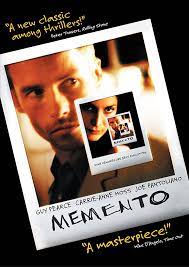Welcome to my blog!
Here are some photos I have been re-working to keep you distracted from the fact that I am often but a disembodied voice in the blogosphere below! I like re-working abstracts to bring out specific effects.
 This week has taken me back into an historical look at the structure of filming from the early 1900s all the way to modern day. The over-riding theme is that technological developments seem to enable new ways not only of creating films but also for sharing scripts. If a production had to operate according to a business model and make money, there was less ability to use improvisation in the conception, filming or sharing of the film. If a project was being made financially independently, then creatives could experiment with improvisation as much as they wished. Steven Price's "A History of the Screenplay" really brought this home with all its examples of how people have tried to step outside the Hollywood scriptwriting formula (the 3 Act arc of a film), but have had to operate with independent financial backing in order to make these more experimental pieces. Some of the films that have broken with the narrative standard structures (like Reservoir Dogs and Memento) managed to cross to mainstream popularity and enable more flexibility in the mainstream craft. for example, time shifts away from chronological order, are now commonplace in films. James Cameron created hardware technology (The Simulcam) that enabled on-the-spot green screen editing whilst the actors were performing scenes in Avatar. This has revolutionised the way that special effects are integrated and edited in films, enabling 'on the spot' script revisions and seriously reducing costs of production time. Treatment and tutorialSo, I had worked on the premise, outline and treatment for my short film and felt that I had quite a good overview on both characters and plot... following the 3 Act arc to a 'T'... and then... I had a fantastic tutorial with Mat that made me realise that what I had written may well be good for a long film or even a series but definitely wasn't the right angle for a short film.
Rather than trying to create a well-rounded 2-hander, giving equal credit and time to both the protagonist and antagonist, I needed to choose one person and show their own personal awareness develop through the unfolding action. Back to the drawing board... reducing to a third of the previous action, now all from one perspective. I am re-writing it and it feels great to learn this development. Having a theatrical background, I think I naturally write from a very objective, action aware, plot-driven viewpoint, attempting to give depth and substance to more than just a single protagonist. But a short film needs to happen as a tiny transformative moment in a character's life- showing the conflict between what they want and what they actually need. What do they stand to lose if they cannot get what they want? What are the obstacles to them getting what they want and what happens if they fail to overcome them? So, I shall be busy for a few days, rewriting my structural basics. We also started our peer review group this week. I have to be honest, until I truly understand how to write the short film format successfully myself, I do not think I can offer good criticism to other people. I don't want to mislead them by imaging that I know more than I do. Once I feel a bit more confident, I will be really happy to offer what I hope will be helpful commentaries for others. We also have to use yet another new software application for the group. It will be really useful, but I always feel anxious that I might post something that has autocorrected itself into nonsense and then not be able to edit/delete it when using new software... If online wasn't permanent and unable to be erased, I would be a lot happier with interacting freely...
0 Comments
Leave a Reply. |
About EmilyStarting a blog as I navigate an MA is all new to me. I am generally a really private person with an 'under-the-radar' online presence, so please delight in spotting my awkwardness at sharing all the tricky moments my course will put me through! As all irritating restauranteurs say nowadays: Archives
December 2023
Categories |